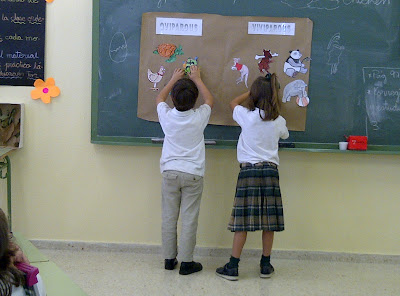These pictures show how assessment is understood by some people:
For some teachers, assessment is based on a simple number or letter and they want the students to learn the same contents to pass their exams and if they don't do it, they fail. This kind of assessment does not take into account the individual improvements in their learning process.
Analyzing these ways of assessing students we should think about something new according to our way of teaching. So, as I reflected on some past entries, I personally agree on doing a differentiated instruction and this is why to do it, teachers are expected to assess also focusing on every different child's progress and not only on the marks they get. Because these marks are based on the SAME exam for DIFFERENT children, with different backgrounds, abilities, interests and also very different learning styles, so we cannot reach to teach every child if we assess them with the same exam.
To change this old way of assessing we have a great tool: Rubrics. It is a way of assessing focused on the child's progress, so with it, they can really understand in what stage of the learning process are them. They can see their weakness and their best abilities, so that they can focus on what they need to keep on practicing.
How to Make a Rubric:
- Decide what criteria or essential elements must be present in the student’s work to ensure that it is high in quality.
- Decide how many levels of achievement you will include on the rubric.
- For each criterion or essential element of quality, develop a clear description of performance at each achievement level.
- Leave space for additional comments and a final grade.
There are different possibilities with Rubrics that can be used to enhance students' learning experience: the teacher can give the Rubric to them before doing the assessment, so they can be conscious of what they are expected to achieve.
It is also a successful practice to involve them in the rubric development process. As we did in class with the rubrics to assess our PLE, students as a class or in small groups can talk and decide the criteria for grading a task. The teacher would be the guide in the process but also gives the students an opportunity to participate on their own learning process by thinking which are their goals and being able to self-assess themselves.
To conclude, we have to bear in mind that rubrics help teachers to display criteria but also levels of achievement, so, the more explicit the items are, the more realistic the rubrics are. With this tool students can understand the reason of their mark and they know what they have to do to improve on their learning process.
Some examples of rubrics:

















